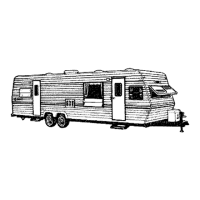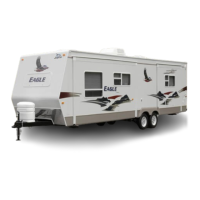128
12. Remove full system canister, insert the lter, and re-attach canister to the mount. For
, set the water heater bypass valves to the
position.
13. Rell the fresh water system with clean water. Use pressure ll or siphon ll method
explained previously. Turn the water heater power ON only when the water heater is
full of water.
14. To verify water heater is full, open hot water faucets, turn pump ON, and when water
runs in a steady stream from the faucets, the water heater is full. Turn OFF the pump
and the faucets.
Preparing your recreation vehicle for colder weather or storage is very important for most
states and Canada. Failure to prepare your RV may cause water supply lines and the water
heater to freeze. The RV should be winterized at the end of the camping season or when it
will be exposed to temperatures that will fall at or below 32°F (0°C). Repairs due to freezing
are not covered by warranty.
If you choose to perform the winterization process yourself, read and understand the follow-
ing information before starting. Contact customer service or your dealer for questions about
this process. It may be easier to winterize the RV with another person to assist you.
If lling the fresh water tank remember to set the two valves
at the water pump back to the NORMAL position when the tank is full.
The winterization process may vary slightly due to different
plumbing congurations between models.
Appliances (refrigerator, dishwasher or clothes washer)
must be winterized. Refer to the appliance owner’s manual for
possible additional information or contact your Dealer or Customer
Service for assistance.
The water heater must be drained to prevent damage
from freezing. It is recommended the water heater be drained and
bypassed during the winterization process particularly if introducing
RV antifreeze into the plumbing system.
Antifreeze should be
kept out of the water heater.

